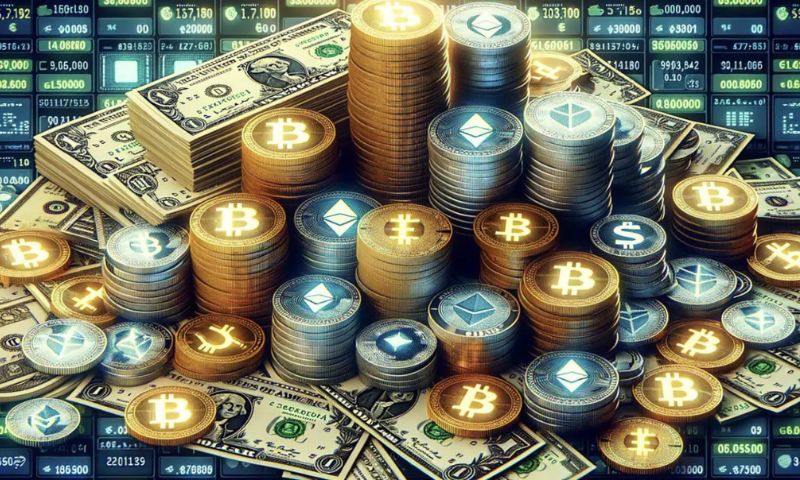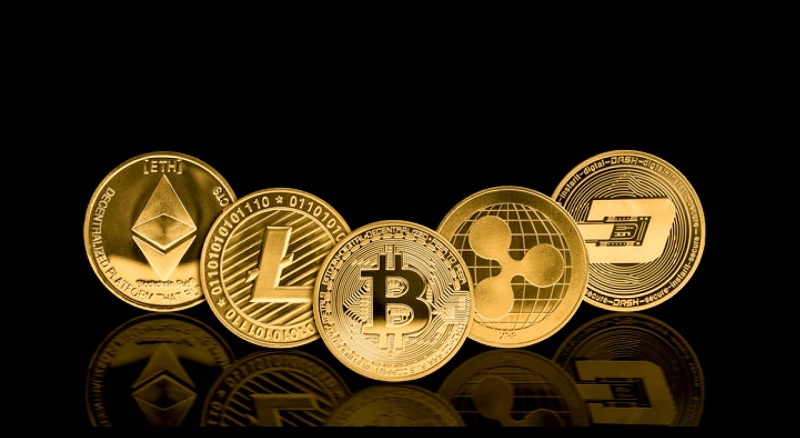Dive into the world of crypto, and you’ll find fees everywhere. But what’s with all the costs? As your go-to digital money guide, I’ll make understanding cryptocurrency fees a breeze. Get ready to uncover the hidden charges that could be nibbling at your wallet. From the essentials of blockchain network fees to the real price tag of crypto trading, my insights will arm you against unwanted surprises. Whether you’re buying your first Bitcoin or selling altcoins, knowing types of fees is key. Keep reading, because I’ve got your back on strategizing to keep costs low and making smart choices for your digital dollar!
The Basics of Cryptocurrency Transaction Fees
Decoding Blockchain Network Fees
Let’s dive into blockchain network fees. You know these are must-pay when you send crypto. Why you ask? It’s the price for network security and processing your transactions. Take Bitcoin transaction charges, for example. They go to miners who make sure your Bitcoin moves safely. These aren’t set fees; they change often. During busy times, you might pay more to get your transaction done faster.
Ethereum gas fees work similarly. “Gas” is just a cute term for the cost to perform actions on the Ethereum network. Do more complicated stuff, pay more gas. Simple as that. Remember though, gas prices soar and dip all the time. So eye those fees before you click send!
Types of Fees: From Buying to Selling Digital Currency
Now, let’s tackle all types of fees from buying to spelling your digital bucks. Think of crypto buying expenses as the cost to get in the game. Places where you buy crypto, like exchanges, will charge you. This can be a fixed fee or a percent of your buy. Selling digital currency fees are much the same. When you want to change back to regular money, expect fees for that service.
But wait, there’s more. If you move your crypto to your own wallet, that’s a wallet withdrawal fee right there. And those can vary a ton depending on the wallet you choose. Using a crypto payment gateway? Yep, fees there too. They make your online shopping with crypto possible.
Not all fees are upfront. Detecting hidden costs in crypto trading is a real skill. Sometimes fees hide in the exchange rate, a sneaky way to charge more. This is where comparison of crypto exchange fees can save your hide. Before you trade, look at those fees!
Lowering cryptocurrency trading fees can be as simple as picking the right time to trade. Busy times can mean higher fees. Also, choosing a crypto exchange with lower fees helps. Some even offer no-fee trading options.
Fixed versus variable crypto fees can make a huge difference. Fixed fees are predictable, the same every time you do the same thing. Variable fees can go up and down based on the network traffic or how much you want to send.
In the end, understanding these fees puts you ahead. It lets you plan and saves you cash. Don’t just click and hope for the best – know what you’re paying and why. It’s your coin, keep more of it!
The Real Cost of Crypto Trading
Identifying Hidden Costs in Crypto Trading
When we trade crypto, we often just look at the price we buy and sell at. But fees can take a big bite out of our cash. So, it’s key to know about every fee we might face. This will help us keep more of our money.
First, we see “trading fees.” These are costs every time we buy or sell. Think of it as the gatekeeper’s fee. Every trade needs a middle-man and they need to eat too. Next, we’ve got “withdrawal fees.” When we take money out, we often pay a fee. This can vary a lot from one place to another.
Some fees depend on the “size” of our trade. We call these “variable fees.” They change as the value of our trade changes. Sometimes we pay a “fixed fee.” This is the same no matter how much we trade.
Then there’s the blockchain. It makes sure our trade is safe and sound. Every trade creates a fee for the blockchain, called a “network fee.” For Bitcoin, it’s a “transaction charge.” For Ethereum, it’s a “gas fee.” These fees pay to put our trades in the ledger.
Lastly, there’s the “crypto to fiat” fee. When we change our crypto to regular money, we get another fee. This fee covers the service of swapping types of money.
Fee Structures Across Cryptocurrency Exchanges
Let’s chat about the different fees across crypto exchanges. Each exchange sets its own rules for fees. We need to look closely to find the best deal. The “fee structure” is how exchanges tell us what they’ll charge. It lists fees like for trading, taking money out, or other services.
Some exchanges offer ways to trade with “no fees.” They might ask us to trade a lot to get this. Or they might just take less money in other ways. Knowing this helps us pick the right place to trade.
Some wallets or services might charge fees for their special features. “Decentralized finance” can have its own fees. And if we’re using “smart contracts,” we need to know their fee too.
To be smart about fees, we need to look at them all together. Small fees can add up. We should keep in mind how often we trade and how much we’re moving. This way, we can find the best place to trade our crypto.
To wrap up, fees are a big part of trading crypto. All these little charges affect our profit. By getting to know the different fees, we can trade smarter. This means we can save money and maybe make more too. We’ve got to pay attention to the “fine print.” That’s where they hide the fees that might trip us up.
Smart Strategizing to Minimize Fees
When Are You Paying Too Much? Analyzing Average Costs
You might wonder, “When are fees too high?” Let’s dive into average costs. For Bitcoin, you can expect to pay a fee each time you send coins. This cost can go up or down, depending on the network demand. It’s not fixed. Ethereum gas fees work in a similar way but can get pricey when the network is busy.
To make a smart move, keep an eye on the average crypto transfer fee. Get a feel for what’s normal. Watch out for wallet withdrawal fees, too. If you’re not careful, they can eat into your crypto stash. Decentralized finance charges change often. They can be trickier to track than fees for sending or swapping coins.
Compare what you’re paying with the average out there. If you’re paying more, it’s time to rethink your strategy. Compare and then decide. Are you really getting the best deal?
Tools and Techniques to Lower Cryptocurrency Trading Fees
Now, let’s talk about cutting those crypto trading costs down. First, it helps to understand miner fees. These are the fees that motivate network folks to validate your transaction. If you can wait a bit, consider sending transactions when the network isn’t as busy. This can save you some coin.
Next up, use tools for calculating fee per crypto transaction. Many exchanges and wallets offer these. They help you see what you’ll pay before you make a move. It’s like having a financial crystal ball. Pretty cool, right?
Look for no-fee cryptocurrency exchanges. They do exist! These can really change the game for your wallet. But don’t let the “no fee” tag fool you. Always read the fine print. There might be other costs hiding in there.
Have you heard of layer 2 scaling solutions? They’re like shortcuts for your transactions. They can skip the usual traffic. This can mean lower fees for you. Yes, even when everyone else is busy trading.
Remember, fixed versus variable crypto fees matter. Deciding which is better depends on your trading habits. If you make lots of trades, a fixed fee might lead to savings. If you trade less often, variable fees could be your friend.
Finally, get to know the fee structures of popular crypto wallets and exchanges. Each one has its own way of charging you for your transactions. Some might offer lower fees for bigger trades. Others have better rates if you use their own coin.
Learning the ropes of crypto fees can feel like a lot. But once you do, you’ll trade with more confidence. And maybe, just maybe, keep more money in your digital pocket. The key is to keep learning, keep comparing, and always be on the lookout for better tools and tips to save on those pesky fees.
Advanced Fee Considerations for Informed Trading
Predicting Future Fee Trends: From Bitcoin to Altcoin
Ever notice how crypto fees can swing wildly? It’s because fees aren’t set in stone. They change with how busy the network is. The busier it gets, the higher the fees. Tech upgrades can also play a role in how much you’ll pay. For Bitcoin, when lots of folks are using the network, transaction charges go up.
How about altcoins? Their fees also vary based on network traffic and how they’re built. For example, those with their own blockchain can control their fee structures. This means altcoin exchange rates can also shift with how much work the network is doing.
As for predicting fee trends, think about demand. More users equal more congestion, which likely means higher fees. But, keeping an eye on tech updates is key too. Things like layer 2 solutions can ease the load and might lower fees.
Looking ahead, think about what may cause more folks to hop onto crypto. Big news, new apps, and market shifts can all stir the pot. More activity could boost fees, especially for hot cryptos like Bitcoin and Ethereum.
To wrap your head around fee trends, watch the networks. See when they’re packed and figure out when’s best to make your move. Choosing the right moment can save you some coins.
The Impact of Fees on Crypto Investment Returns
Let’s talk about what fees mean for your wallet. Every time you make a move with crypto, fees nibble at your funds. Those bites can add up and take a chunk out of your investment returns. When buying or selling, you have to think about the cost of doing business.
For long-term investors, you might face fewer fees as you’re not moving money around much. But if you’re a trader who buys and sells often, all those costs can eat into your profits. It’s like running a race where your shoes keep losing soles. You’ve got to keep patching them up to keep going!
Understanding miner fees is crucial too. They reward the folks who process your transactions. And don’t forget about wallet withdrawal fees and conversion charges when you switch from crypto to fiat money. These can also take a bite.
Staying smart about fees can help you grow your investment. Know the fees for the moves you want to make, and plan for them. Watch out for exchanges that offer lower or even no fees. They can make a huge difference in how much you keep.
Remember, fees can sneak up on you. Always check what you’ll pay before you trade. And keep an eye on market trends, as they can signal when fees might hike up. Your goal? Keep those fees down so you can keep more of your investment growing.
To sum up, we dove into how crypto fees work, from the blockchain to selling digital cash. We also peeled back the curtain on the true cost of trading, spotting those sneaky hidden fees on different exchange platforms. Next, we shared smart moves to cut down what you pay in fees, so you get to keep more of your money. Lastly, we looked ahead at possible changes in fees and how they can affect your investment gains. Remember, every dollar saved in fees is one more you can invest. Keeping these tips in mind can make a real difference. Keep learning and trading smart!
Q&A :
What Are Cryptocurrency Fees?
Cryptocurrency transaction fees are small costs incurred when making transactions on a blockchain network. These fees compensate miners or validators for the computational power and effort required to verify and add transactions to the blockchain. Fees can vary based on the network’s congestion, the complexity of the transaction, and the speed at which you want it to be processed.
How Do Cryptocurrency Transaction Fees Work?
When you send cryptocurrencies like Bitcoin or Ethereum, the transaction needs to be verified and recorded on the blockchain. This process requires the use of computational resources. To incentivize the network participants (miners or stakers) to process your transaction, you attach a fee. Transactions with higher fees often get priority and are processed faster, particularly in times of high network demand.
Why Do Cryptocurrency Fees Vary so Much?
Cryptocurrency fees can fluctuate wildly due to several factors. The main reason is network congestion; when many people are using the network, the demand for transaction processing goes up, and so do the fees. Additionally, the complexity of a transaction can affect its cost, as can the desired speed of transaction confirmation. Some cryptocurrencies have variable block sizes, which can also contribute to fee variations.
Can You Avoid Paying High Cryptocurrency Fees?
While avoiding cryptocurrency fees entirely is not possible if you want your transaction to be processed, there are ways to minimize them. One strategy is to transact during off-peak hours when the network is less congested. Some wallets also allow you to adjust the fee you’re willing to pay, although setting it too low may result in a delayed transaction. Additionally, choosing cryptocurrencies with lower fee structures can also help reduce costs.
Are There Any Cryptocurrencies Without Transaction Fees?
There are certain cryptocurrencies that have been designed to have extremely low or even zero transaction fees. These projects typically use different consensus mechanisms or network designs that do not require substantial fees to process transactions. However, it’s important to research and understand how these networks remain secure and how they can sustain operations without substantial fee income.






